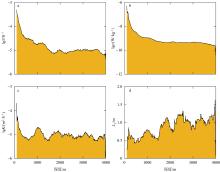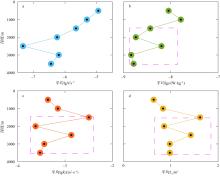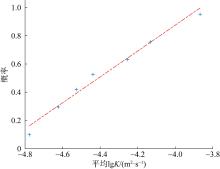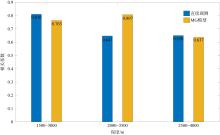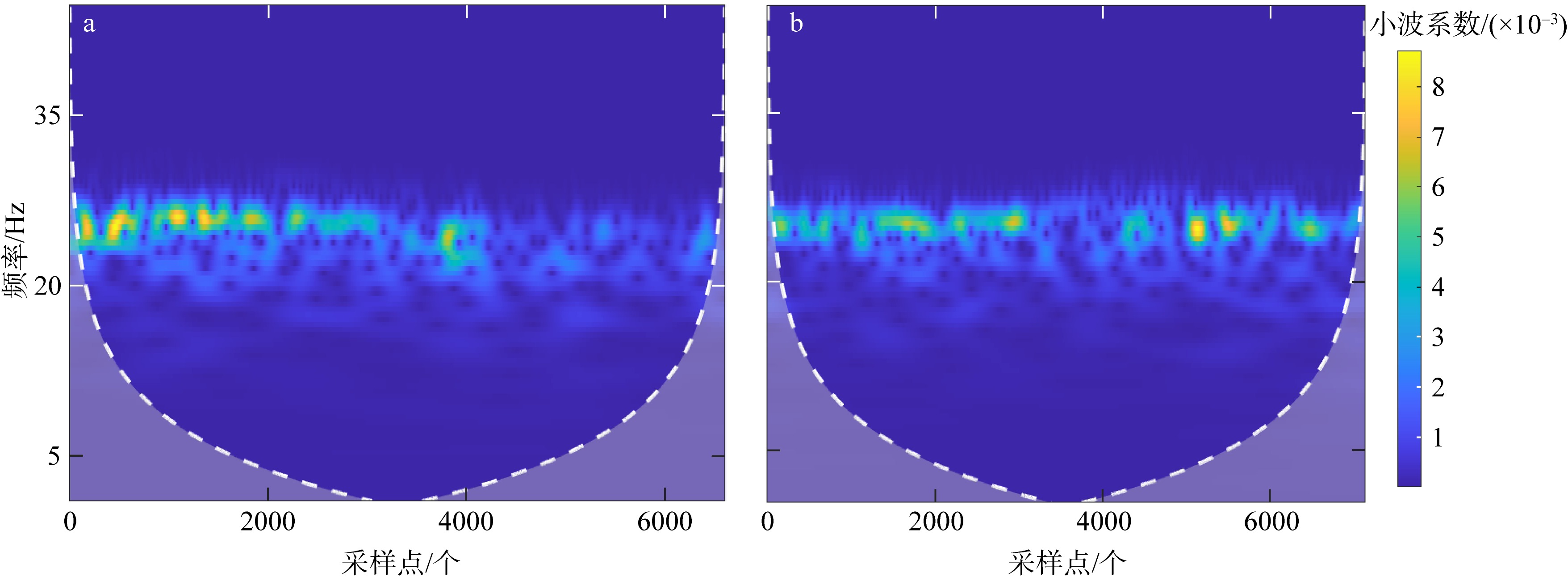| [1] |
陈子飞, 于非, 王建丰, 等, 2021. 吕宋海峡不同湍流估算方法的应用对比研究[J]. 海洋与湖沼, 52(1): 27-38.
|
|
CHEN ZIFEI, YU FEI, WANG JIANFENG, et al, 2021. Comparative study on the application of diffetent turbulence estimation methods in Luzon strait[J]. Oceanologia et Limnologia Sinica, 52(1): 27-38 (in Chinese with English abstract).
|
| [2] |
康建军, 邬海强, 杨庆轩, 等, 2007. 海洋湍流观测技术[J]. 海洋技术, 26(3): 19-23.
|
|
KANG JIANJUN, WU HAIQIANG, YANG QINGXUAN, et al, 2007. Ocean turbulence measurement technology[J]. Ocean Technology, 26(3): 19-23 (in Chinese with English abstract).
|
| [3] |
李敏, 2013. 基于Thorpe尺度对南海深层混合的研究[D]. 青岛: 中国海洋大学.
|
|
LI MIN, 2013. Study of abyssal mixing in the South China Sea based on Thorpe scale[D]. Qingdao: Ocean University of China (in Chinese with English abstract).
|
| [4] |
尚晓东, 卢著敏, 谢晓辉, 等, 2010. 海洋湍流与海洋混合研究及其进展[C]// 第八届全国实验流体力学学术会议论文集. 北京: 海洋出版社: 123-130.
|
|
SHANG XIAOFONG, LU ZHUMIN, XIE XIAOHUI, et al, 2010. Research on Marine turbulence and Marine mixing and its progress[C]// Proceedings of the 8th National Academic Conference on Experimental Fluid mechanics. Beijing: China Ocean Press: 123-130 (in Chinese with English abstract).
|
| [5] |
孙斌, 周慧, 汪嘉宁, 等, 2024. 北太平洋低纬度西边界流系湍流混合的微观结构测量和参数化方法评估[J]. 海洋与湖沼, 55(1): 1-15.
|
|
SUN BIN, ZHOU HUI, WANG JIANING, et al, 2024. Microstructure measurement and parametric method evaluation of the low-latitude western boundary flow system turbulent mixing of the North Pacific Ocean[J]. Oceanologia et Limnologia Sinica, 55(1): 1-15 (in Chinese with English abstract).
|
| [6] |
ALFORD M H, PEACOCK T, MACKINNON J A, et al, 2015. The formation and fate of internal waves in the South China Sea[J]. Nature, 521(7550): 65-69.
|
| [7] |
DILLON T M, 1982. Vertical overturns: a comparison of Thorpe and Ozmidov length scales[J]. Journal of Geophysical Research: Oceans, 87(C12): 9601-9613.
|
| [8] |
FARGE M, 1992. Wavelet transforms and their applications to turbulence[J]. Annual Review of Fluid Mechanics, 24: 395-457.
|
| [9] |
FINNIGAN T D, LUTHER D S, LUKAS R, 2002. Observations of enhanced diapycnal mixing near the Hawaiian ridge[J]. Journal of Physical Oceanography, 32(11): 2988-3002.
|
| [10] |
GALBRAITH P S, KELLEY D E, 1996. Identifying overturns in CTD profiles[J]. Journal of Atmospheric and Oceanic Technology, 13(3): 688-702.
|
| [11] |
GREGG M C, 1989. Scaling turbulent dissipation in the thermocline[J]. Journal of Geophysical Research: Oceans, 94(C7): 9686-9698.
|
| [12] |
GREGG M C, 1999. Uncertainties and limitations in Measuring ϵ and χT[J]. Journal of Atmospheric and Oceanic Technology, 16(11): 1483-1490.
|
| [13] |
LIANG CHANGRONG, SHANG XIAODONG, QI YONGFENG, et al, 2018. Assessment of fine-scale parameterizations at low latitudes of the North Pacific[J]. Scientific Reports, 8(1): 10281.
|
| [14] |
MACKINNON J A, GREGG M C, 2003. Mixing on the late-summer new England shelf: solibores, shear, and stratification[J]. Journal of Physical Oceanography, 33(7): 1476-1492.
|
| [15] |
MUNK W, WUNSCH C, 1998. Abyssal recipes II: energetics of tidal and wind mixing[J]. Deep Sea Research Part I: Oceanographic Research Papers, 45(12): 1977-2010.
|
| [16] |
OAKEY N S, 1982. Determination of the rate of dissipation of turbulent energy from simultaneous temperature and velocity shear microstructure measurements[J]. Journal of Physical Oceanography, 12(3): 256-271.
|
| [17] |
OSBORN T R, 1980. Estimates of the local rate of vertical diffusion from dissipation measurements[J]. Journal of Physical Oceanography, 10(1): 83-89.
|
| [18] |
OZIMDOV R V, 1965. On the turbulent exchange in a stably stratified fluid[J]. Atmospheric and Oceanic Science Letters, 8: 853-860.
|
| [19] |
QU TANGDONG, DU YAN, MEYERS G, et al, 2005. Connecting the tropical Pacific with Indian Ocean through South China Sea[J]. Geophysical Research Letters, 32(24): L24609.
|
| [20] |
THOMAS C, FOKEN T, 2005. Detection of long-term coherent exchange over spruce forest using wavelet analysis[J]. Theoretical and Applied Climatology, 80(2): 91-104.
|
| [21] |
THORPE S A, 1977. Turbulence and mixing in a Scottish loch[J]. Philosophical Transactions of the Royal Society of London Series A, Mathematical and Physical Sciences, 286(1334): 125-181.
|
| [22] |
TIAN JIWEI, YANG QINGXUAN, ZHAO WEI, 2009. Enhanced diapycnal mixing in the South China Sea[J]. Journal of Physical Oceanography, 39(12): 3191-3203.
|
| [23] |
WANG WEI, 2004. Wind energy input to the surface waves[J]. Journal of Physical Oceanography, 34(5): 1276-1280.
|
| [24] |
WATANABE M, HIBIYA T, 2002. Global estimates of the wind-induced energy flux to inertial motions in the surface mixed layer[J]. Geophysical Research Letters, 29(8): 64-1-64-3.
|
| [25] |
WUNSCH C, FERRARI R, 2004. Vertical mixing, energy, and the general circulation of the oceans[J]. Annual Review of Fluid Mechanics, 36(1): 281-314.
|
| [26] |
YANG QINGXUAN, ZHAO WEI, LI MIN, et al, 2014. Spatial structure of turbulent mixing in the northwestern Pacific Ocean[J]. Journal of Physical Oceanography, 44(8): 2235-2247.
|
| [27] |
ZHAO ZHONGXIANG, ALFORD M H, 2006. Source and propagation of internal solitary waves in the northeastern South China Sea[J]. Journal of Geophysical Research: Oceans, 111(C11): C11012.
|
| [28] |
ZHOU HUI, DEWAR W, YANG WENLONG, et al, 2022. Observations and modeling of symmetric instability in the ocean interior in the Northwestern Equatorial Pacific[J]. Communications Earth & Environment, 3: 28.
|
 ), YANG Hua(
), YANG Hua( ), MAO Beibei, ZHENG Yuxuan
), MAO Beibei, ZHENG Yuxuan








